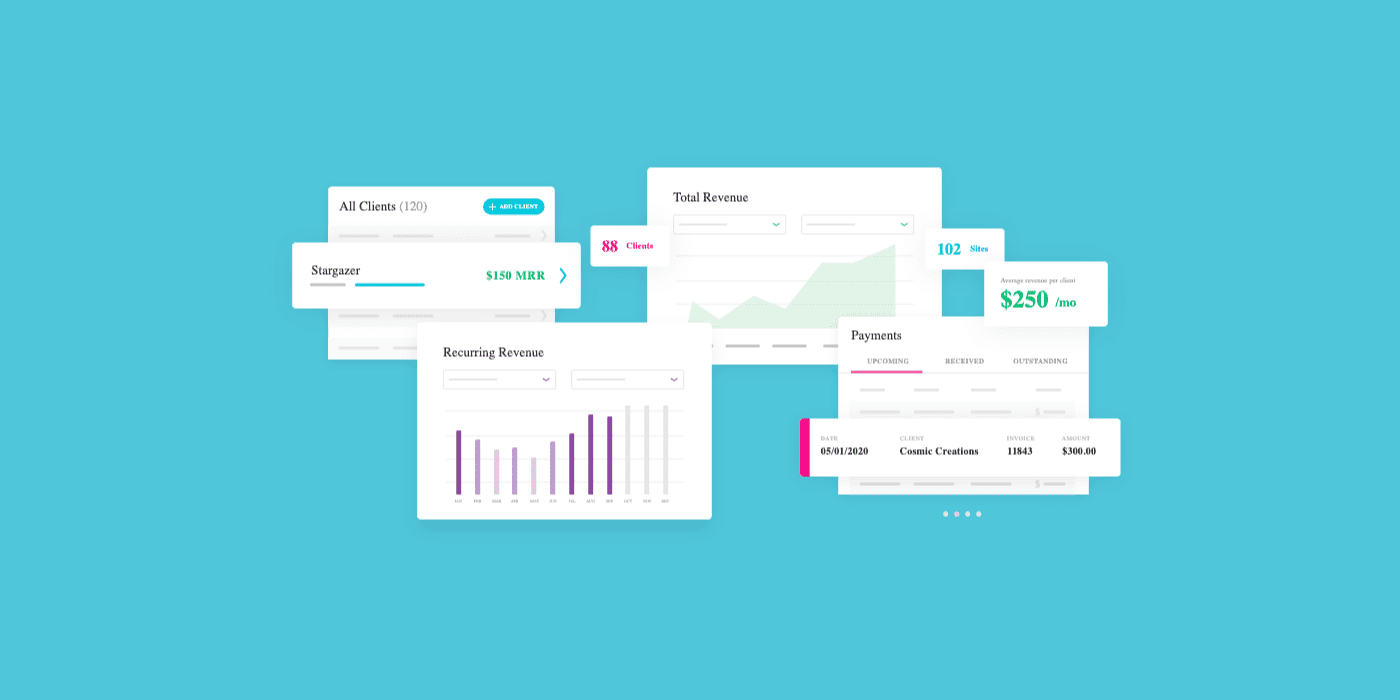Grow your business by leveraging a personalized customer experience that helps drive conversions.
Flywheel Growth Suite is a set of tools to help you do just that. With the suite, you can help your customers find what they’re looking for quickly and smoothly. Flywheel offers everything in one place so you don’t have to manage multiple platforms or make changes on each site when things change at Flywheel. Not only will this save time and ensure all users are getting the experience they want, but it will also provide consistency across channels – making sure all parts of your marketing strategy work together effectively.
What are the advantages of using Growth Suite by Flywheel?
1. Personalized Dashboard
Your Account Manager will help create a personalized dashboard that shows all of your client sites in one place. From here, you can see metrics for each site as well as customize the display to show only what’s important to you. For example, if you want to be sure that all of your clients’ sites are in tip-top shape, you can check each of their pages to see page speed, load time, and how many posts they have.
The Flywheel team will also include site speed as a factor when reviewing your reviews. This means Flywheel will only publish sites that pass the “3 second test.”
2. Site and Content Management
With Flywheel, you’ll be able to put your clients in control of their content. Using Flywheel’s client dashboard, they can login and make changes to their site’s blog posts, pages, and images. You no longer have to worry about remembering what needs updating or taking time away from working on other projects or clients for the updates.
This also means Flywheel will be able to restore sites that have been accidentally deleted – even if you don’t notice it right away.
3. Automated Notifications and Reports
Flywheel management tools create automated notifications for everything from site traffic, page speed, and load time to errors in code on your client’s site. But Flywheel goes further with reports for your clients and you.
At the same time, Flywheel will also provide analysis on what content performs best which is great for guiding your client when creating a new site or revamping an existing one.
As you can see, Flywheel management tools put everything you need to run a successful WordPress business in one place, making it easier for you. In easier words, Flywheel can take care of the technology while you focus on what really matters, growing your business.
You’ll love Flywheel Growth Suite if:
- You have a team and want an all-inclusive package that covers everything from hosting to billing to client management.
- You are looking for more than just site hosting so you don’t have to manage multiple companies or platforms.
- You are looking for tools that will enable you to provide your clients the best experience possible by helping them find anything they need quickly and easily. Flywheel Growth Suite can help you with all of this and more!
More information about Flywheel’s WordPress hosting
- Flywheel’s WordPress hosting provides a complete environment for your clients’ sites. That means you’ll get:
- Instant scaling – Flywheel will instantly spin up additional resources as needed to handle traffic spikes, so your client’s sites never slow down during peak hours.
- Automatic backups – Flywheel Backup backs up all of your customer sites every night, ensuring that your sites will always be in safe hands.
- Free SSL – Flywheel offers free SSL for all customers so they know their information is always secure when they check out on your site.
- Optimized hosting – Flywheel servers are optimized to handle the high traffic volume WordPress can generate. They’re also designed specifically for fast WordPress hosting. Flywheel also auto-installs security updates and core WordPress updates daily, so you always have the latest protection against hackers.
- Free migration – Flywheel handles everything from your domain name transfer to your content transfers, so you can focus on growing your business instead of worrying about technology issues.
- “Flywheel will take care of everything for you”
- Flywheel WordPress Hosting makes it easy to grow a business.
- You no longer have to worry about updating your clients’ website and site speed. Flywheel will handle this and it will also back up all of your customer sites every night (nightly backups)
- Flywheel Growth Suite provides you with tools to not only help grow your business, but help your clients’ websites grow as well. Flywheel growth suite puts you in control with reports and notifications for things such as site speed and traffic. The Flywheel team can also help you with things such as automated notifications and reports. The best part? Flywheel will even provide analysis on what content performs best which is great for guiding your client when creating a new site or revamping an existing one.
- Flywheel Growth Suite makes it easy to run a successful WordPress business, unlike many other platforms.
- Flywheel Growth Suite includes everything you need to run your business in one place. In other words, Flywheel Growth Suite includes Flywheel management tools, WordPress hosting and subscription billing, working together to help you grow your WordPress web development agency
Summary
Flywheel Growth Suite is the first all-inclusive package for agencies and freelancers that includes everything from hosting to billing to client management. The suite also comes with tools such as automatic notifications, reports, analysis on what content performs best which helps clients create a new site or revamp an existing one. Flywheel offers free SSL for all customers so they know their information is always secure when they check out on your site. If you’re looking for more than just site hosting so you don’t have to manage multiple companies or platforms, Flywheel Growth Suite can help you with all of this and more!







